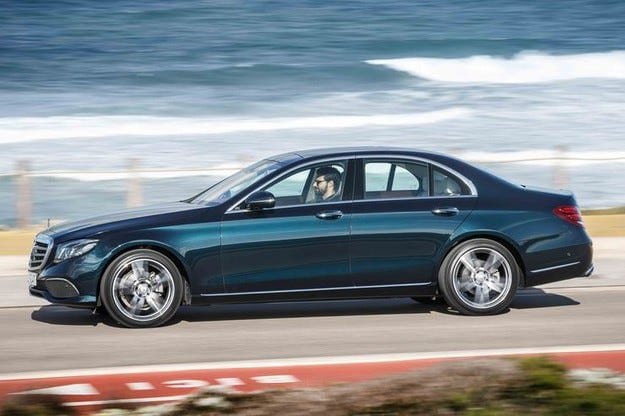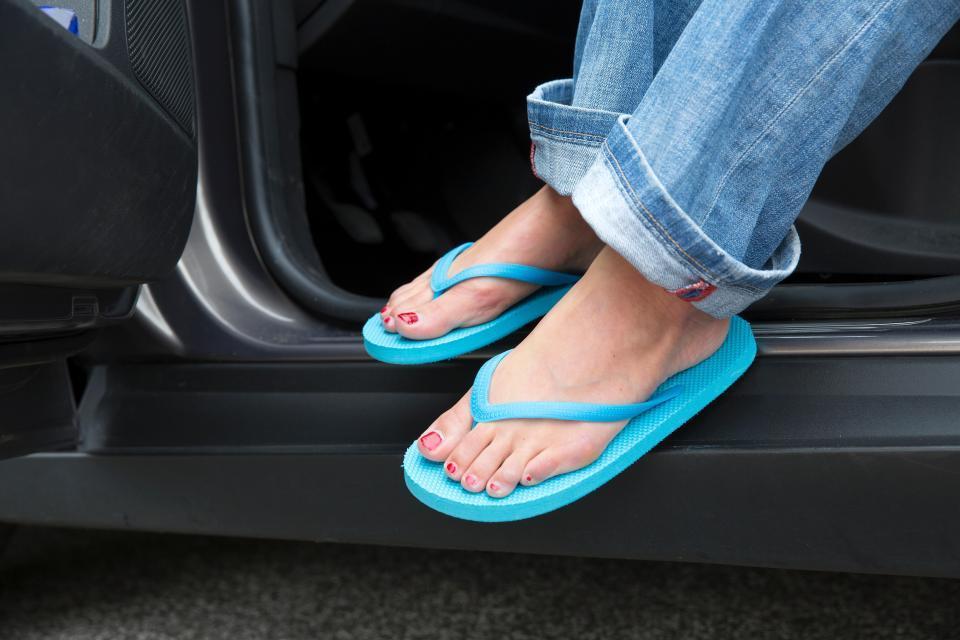
Test drive Mercedes E 220 d: theory of evolution

The first kilometers behind the wheel of one of the most important Mercedes models.
It is known that development most often has an evolutionary character, in which smooth quantitative accumulation leads to sharp qualitative changes. Often new, higher stages of progress do not attract attention at first glance, hidden deep under the outer shell of processes. This seems to be the case with the new generation of the E-Class, a key model for the Mercedes brand, which many consider to be its epitome. The impressive stance of the Mercedes E 220 d is maintained in the respectful style typical of the latest Stuttgart models with smooth surfaces, rounded shapes and elastic, dynamic lines. In the absence of suitable objects of scale comparison, the impression of an enlarged C-class is given, although the sound of the S-class is heard in many elements - especially in the version with the classic grille, accompanied by new headlights with Multibeam LED technology. The increased length and wheelbase are also visually noticeable, but the reflection of the extra six centimeters is much more noticeable in the interior, where rear passengers until recently enjoyed only the comfort and space available in luxury limousines.
Applied fiction
The driver and his front passenger are placed on no less comfortable seats, so they have nothing to envy. On the contrary, the first objective proof of the evolutionary leap towards the new generation of the E-Class lies before them in all its glory. The optional full digital instrument cluster integrates two high-resolution 12,3-inch widescreen displays that span the entire space from the driver's side to the end of the center console, taking over the functions of the classic steering wheel control unit and the multimedia center in the center. . The picture quality is impeccable and the driver can adjust the readings according to their preferences in the three main modes "Classic", "Sport" and "Progressive" - after a short period of getting used to the convenience is undeniable, and the whole procedure will not take longer and efforts. changing the contents of the home screen of a modern smartphone. The entire panel gives the impression of floating in space, while its impressive length emphasizes the horizontal structure of the interior.
The gear lever that Mercedes moved to the right of the steering column a few years ago has not changed, making room for the center console's central control unit via a rotary controller and touchpad. In the same way, new sensor fields are used, conveniently located under the thumbs on both steering wheel spokes.
Pressing the classic start button awakens the new Mercedes E 220 d engine, which in itself also reflects a great leap forward in engine development in Stuttgart. The all-aluminum OM 654 generation four-cylinder engine hums quietly and evenly at idle, justifying the efforts made by its creators. The new generation is more compact and lighter than its predecessor, has a smaller displacement (1950 instead of 2143 cm3), but a higher liter capacity of 99 instead of 79 hp. per liter. The increased efficiency is accompanied by a reduction in internal friction and in the noise level that reaches the passenger compartment in an unobtrusive and highly subdued manner. Equally unobtrusive is the interaction of the turbo diesel with a standard nine-speed automatic transmission, channeling 194 horsepower and 400 Nm of torque to the brand's classic rear wheels. With the new 220 d, the E-Class accelerates quickly, does not raise the tone at high revs and exhibits an atypical responsiveness to the accelerator pedal for a diesel model.
King of comfort
On the other hand, the driving comfort of the new generation with the optional Air Air Control air suspension is not only typical, but also truly iconic for Mercedes. The adaptive system has three air chambers on each of the rear and two chambers on the front wheels, smoothly changes the characteristics of both springs and shock absorbers and ensures that the sedan can smoothly glide even on large asphalt and uneven bumps, minimizing noise and clutter in the interior. Fortunately, all this is not due to the dynamics of behavior - narrow roads with a lot of turns do not interfere with the Mercedes E 220 d, which behaves with dignity, does not bother the driver with its dimensions and weight and enjoys activity, providing a good reverse. steering response information.
And for dessert. The latter is one of the main actors in an impressive arsenal of electronic driver assistance systems (note - support, not replacement) of the driver, in which quantitative accumulations in recent years have really begun to approach a qualitative leap in autonomous driving. In fact, the only obstacles to full autonomy at the moment are onerous regulations and an understandable psychological barrier, but anyone who has the opportunity to test the skills of Drive Pilot when overtaking on the highway, realizes the superiority of an accurate stereo camera, powerful radar sensors and control electronics. The system and management in detecting and preventing sudden obstacles on the road will inevitably change its attitude. Yes, the classic question “What if something goes wrong!?” will never fall off the agenda of naysayers, but in practice, the difference between a car with these systems and a car that lacks or lacks them is like the difference between a modern smartphone and a phone with a Bakelite puck—they do the same thing, but at different evolutionary levels.
CONCLUSION
Great engine and impeccably balanced chassis with superior comfort. The new Mercedes E 220 d strongly defends its high reputation and adds to it an impressive arsenal of modern electronics for active behavior management.
Text: Miroslav Nikolov
